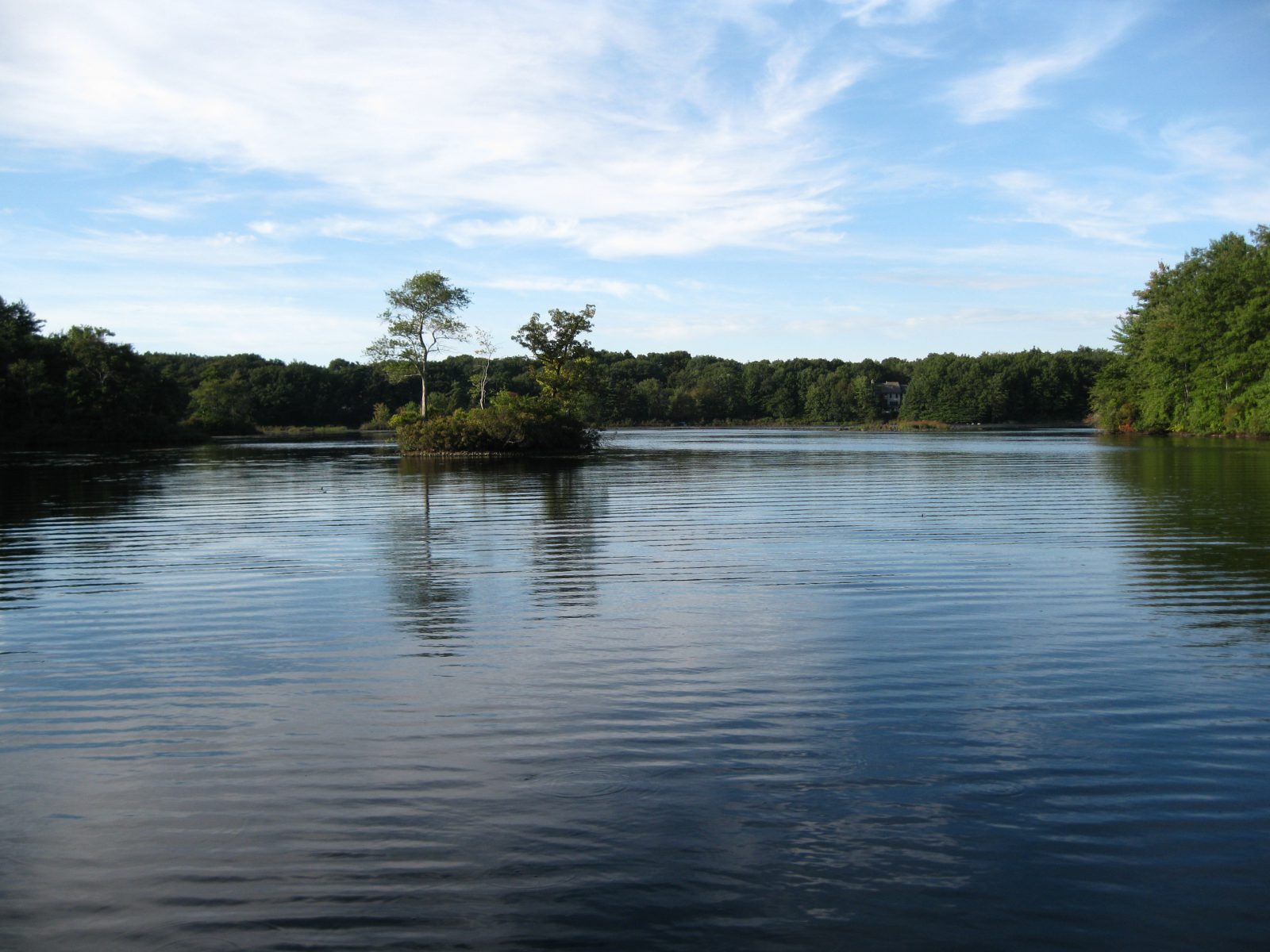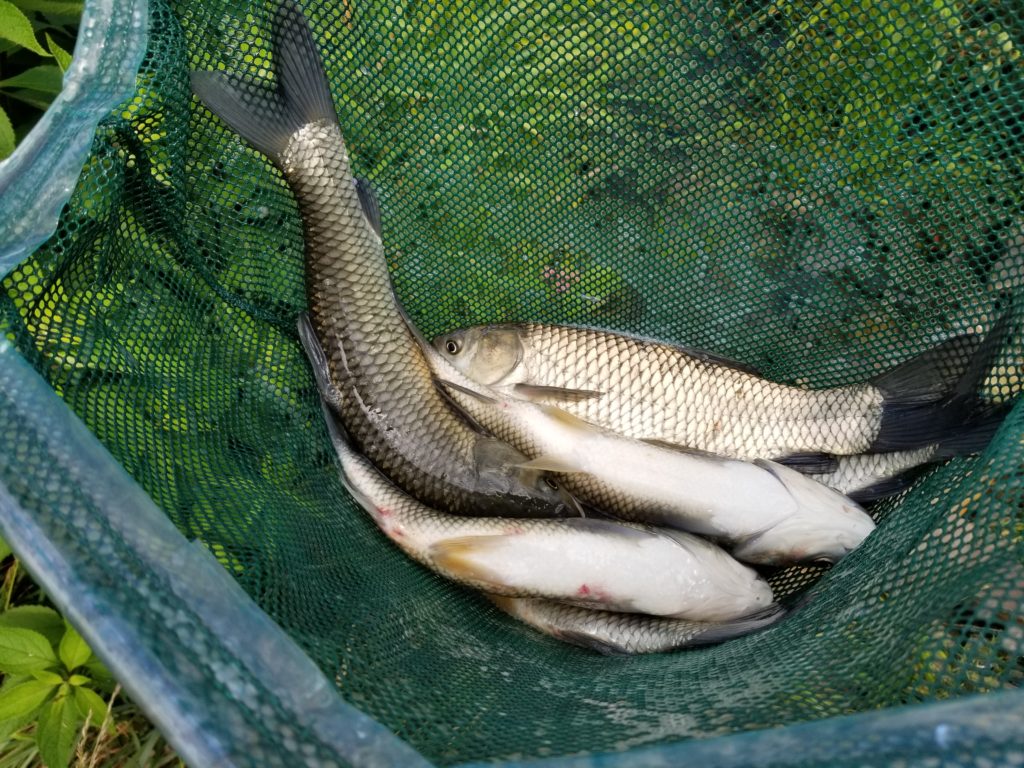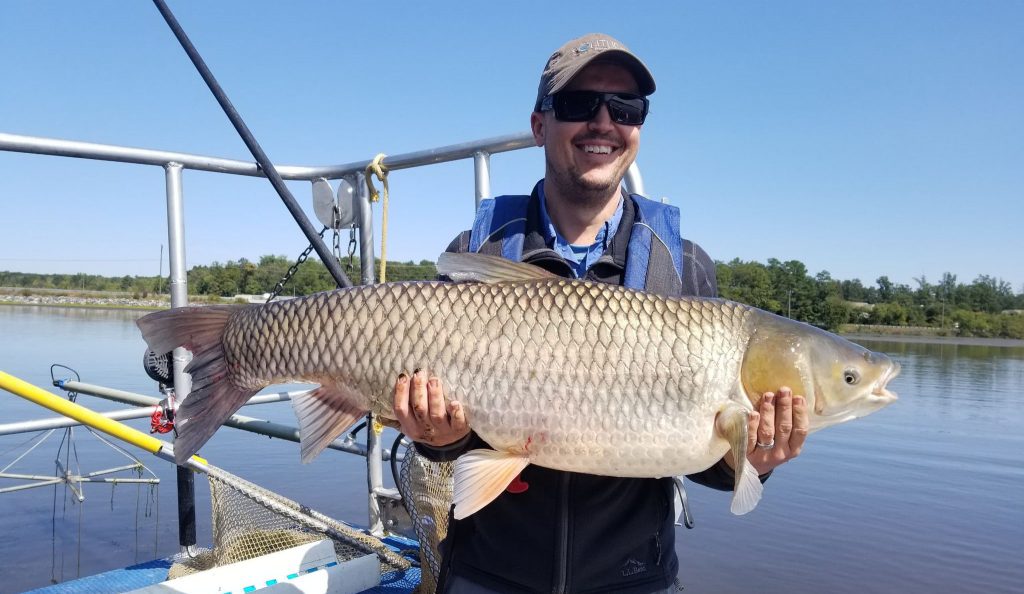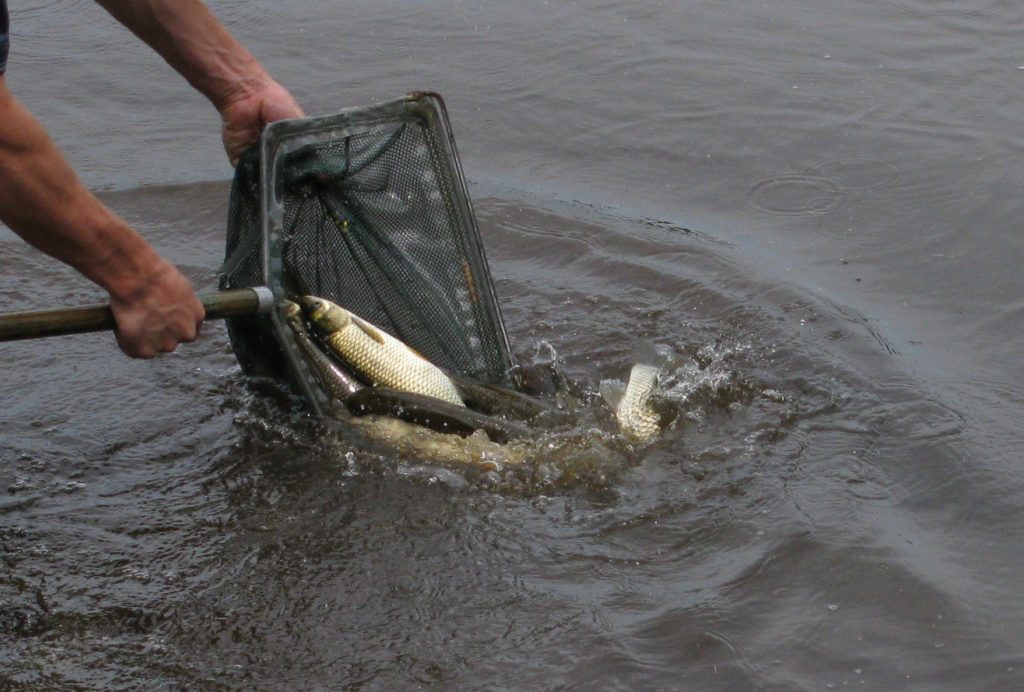

The Benefits of Utilizing Grass Carp in Your Lake Management Plan
As professionals in the lake and pond management industry, we view ourselves as the caretakers of our freshwater resources. As such, we continually seek ways to improve and create Integrated Pest Management (IPM) programs that preserve those valuable ecosystems. If an improvement can be made to an IPM that is beneficial to the environment and can possibly save pond owners money, we view it as a win-win for all. One such improvement is the use of Grass Carp to help manage nuisance vegetation in lakes and ponds.
How Do Triploid Grass Carp Control Vegetation?
A voracious plant-eating fish native to Asia, Grass Carp were originally imported to the United States in the early 1960s to serve as a “biological control” option for nuisance aquatic vegetation. Unfortunately, as non-native species without natural predators, they also had the ability to reproduce quickly, posing a substantial risk to the environment. In the 1980s, researchers developed a process to create a sterile triploid fish that cannot reproduce and establish undesired populations. Currently, commercial hatcheries propagate Triploid Grass Carp for stocking in many states across the country.
When used as part of an IPM program, Triploid Grass Carp can help reduce the amount of pesticides required for the management of nuisance and invasive vegetation. Though EPA-registered aquatic herbicides play a key role in safe and responsible plant management, they should generally be viewed as a last resort option for stubborn infestations. Limiting the long-term need for herbicides through proactive and natural solutions can help decrease the chance of plant resistance and reduce extensive costs for communities and property owners.

How Many Grass Carp Should I Stock?
Biologists determine the size and quantity of Triploid Grass Carp required to manage plant infestations based on the existing vegetation type and density, past Grass Carp stockings, and the current population of predators in the water resource. Though Grass Carp love to eat, they do not consume all species of plants. Their preference for certain soft tissue aquatic vegetation species such as Hydrilla, Spike Rush, and Widgeon Grass can help reduce their abundance, but they do not typically feed on plants like water lilies or cattails. If there is a population of predators in the pond, a stocking plan requires larger Grass Carp to minimize predation.
Considerations Before Stocking Grass Carp
Though Grass Carp are a valuable vegetation management tool, there are many considerations for waterbody owners and managers before stocking. One drawback is that grass carp are riverine fish, so they have the tendency to travel downstream in waterbodies that have an outflow. Another drawback is that they can be lazy and may hog any fish feeders that are present, especially if they have eaten all other vegetation in the waterbody.
Finally, it’s important to consider the plant consumption process and potential implications on your lake or pond. As Grass Carp eat and digest extensive amounts of plant matter, they contribute to the nutrient load. Over time, an increase in nutrients can create water quality conditions that encourage the development of undesirable algae blooms. Therefore, it is key to utilize an array of proactive strategies, including buffer management, erosion control, aeration, nanobubble treatments, and other solutions that support the balance of the ecosystem.

Check Local and State Regulations
It’s also extremely important to note that individual state fish and wildlife agencies regulate Grass Carp stocking and often require a permit. The permitting process in many states can be lengthy and complex. Some states also require the installation of escapement barriers prior to stocking for permit approval; others do not allow Grass Carp stocking at all. If you are interested in stocking Grass Carp as part of an IPM program, it’s important to consult with an experienced management company. A professional can determine if carp will eat the vegetation present in your waterbody, identify the correct number and size of fish needed for successful control, properly file for any necessary permits on your behalf, and ensure you abide by all regulations throughout the process.
Stocking Triploid Grass Carp as part of an IPM allows lake and pond owners to know they are taking a more balanced and comprehensive approach to control nuisance aquatic vegetation. Ultimately, integrating an array of proactive management strategies will help increase the longevity of a lake or pond resource while cutting down on long-term costs over time.
Create A Healthy, Thriving Fishery with a Fisheries Management Plan
SOLitude Lake Management is a nationwide environmental firm committed to providing sustainable solutions that improve water quality, enhance beauty, preserve natural resources and reduce our environmental footprint. SOLitude’s team of aquatic resource management professionals specializes in the development and execution of customized lake, pond, wetland and fisheries management programs that include water quality testing and restoration, nutrient remediation, algae and aquatic weed control, installation and maintenance of fountains and aeration systems, bathymetry, mechanical harvesting and hydro-raking, lake vegetation studies, biological assessments, habitat evaluations, and invasive species management. Services and educational resources are available to clients nationwide, including homeowners associations, multi-family and apartment communities, golf courses, commercial developments, ranches, private landowners, reservoirs, recreational and public lakes, municipalities, drinking water authorities, parks, and state and federal agencies. SOLitude Lake Management is a proud member of the Rentokil Steritech family of companies in North America.









